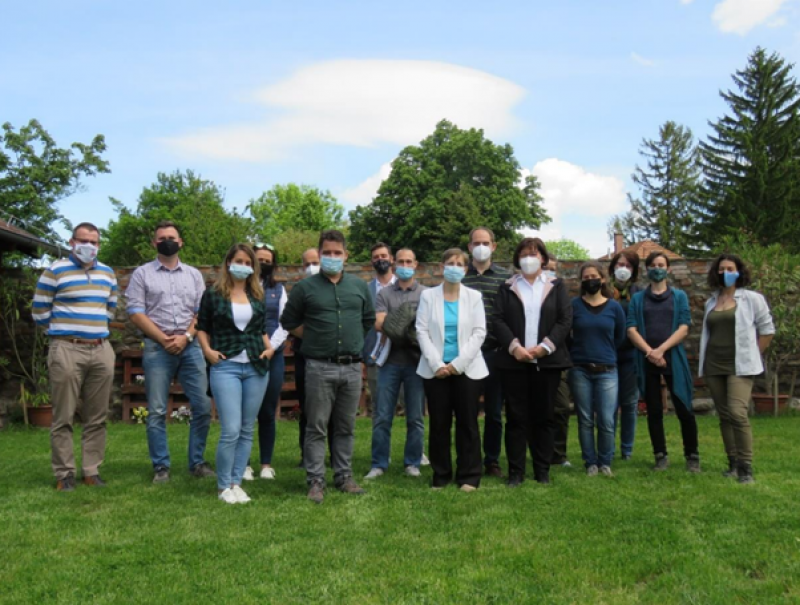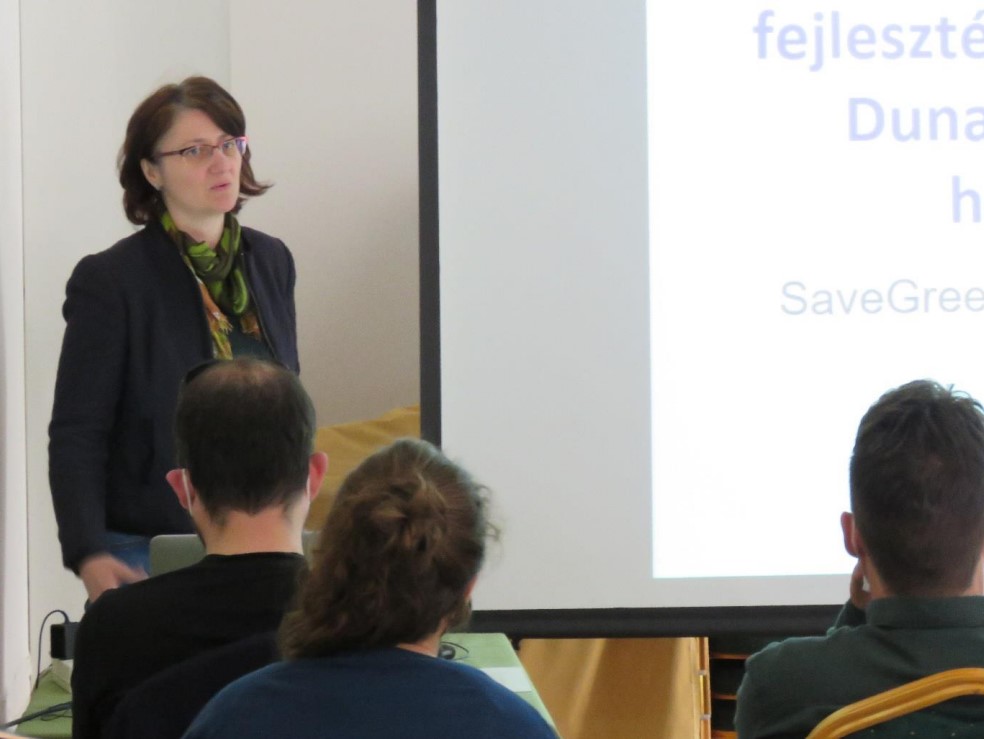SaveGREEN - GREEN INFRASTRUCTURE: THE MAGYAR APPROACH
04-10-2021
Hungarian stakeholders unite to consider how to improve the ongoing SaveGREEN project and promote Green Infrastructure development within pilot areas.

Ecological corridors and biodiversity within SaveGREEN pilot areas are hugely at risk. Wetlands remain underdeveloped. The M2 motorway is under construction, fragmenting natural habitats. Environmental issues of deflation, erosion and inland water problems are rife, while human activities such as forestry, chemicals, a lack of shelter belts, and untreated sewage have only served to exacerbate the situation. In Hungary, the situation is no different. Nevertheless, there is work that can and must be done. Enter: SaveGREEN and its Green Infrastructure (GI) approach.
With an ever-growing interest in GI and rapid development in the field, GI promises to be an effective solution. Implementing it, though, is easier said than done. It faces obstacles such as a lack of public knowledge about ecological corridors, legal shortcomings, weak organisational capacity, and inadequate policy frameworks. Therefore, on 21 May 2021 in Drégelypalánk, Nógrád County, Hungary — a key SaveGREEN pilot area — the Hungarian stakeholders of the project reconvened for a second Local Cross-Sectoral Stakeholder Working Group (WG) meeting. Needless to say, the field of GI was at the core of the discussion — expected challenges and solutions included.
MAPPING GI
The main problem at hand: how SaveGREEN can improve ecological connectivity in bottleneck areas of the Danube basin by adapting land use and management and engaging stakeholders. Answers came thick and fast:
Improving monitoring methodology;
Incorporating localised cross-sectoral operational plans for each pilot area;
Holding international on-site workshops to develop solutions and exchange experiences;
Developing a capacity building programme and training events for authorities and stakeholders;
Releasing a joint political declaration on maintaining and restoring Green Infrastructure with a focus on spatial planning;
Developing a set of recommendations for integrating mitigation measures into national and EU-level policy; and
Holding an international conference in coordination with the IENE 2022 Conference.
Various speakers then provided insight into a wide range of aspects of the SaveGREEN project. László Kollányi PhD (MATE) introduced the project’s newly-launched habitat suitability model, developed by the Environment Agency Austria. He then outlined MATE’s involvement in a project between 2016 and 2020 (funded by the ERDF) to map GI in Hungary and to make recommendations for further development of agricultural management, ecological rehabilitation and conservation, urban and climate protection, water protection, infrastructure protection, and forest protection.
Following this, Gabriella Mária Nagy, PhD (CEEweb) explained relevant critical zones in the Nógrád ecological corridor pilot area, developed as part of the ConnectGREEN project. These zones action plans aim to mitigate potential threats to corridors. She also covered SaveGREEN’s policy-related work, introducing the Hungarian and International Green Infrastructure (GI) Funding Policy Paper developed by WWF-Ro and all relevant project partners. The SaveGREEN project is expected to achieve 3 key results in policy:
- Developing a report on funding measures/interventions for promoting GI at the transnational level;
- Developing a report analysing funding for elaborating GI measures/interventions;
- Developing a ROADMAP for EU Policy opportunities.
 Dr Gabriella Mária Nagy, CEEweb's expert, introduced the Hungarian and International GI Funding Policy Paper.
Dr Gabriella Mária Nagy, CEEweb's expert, introduced the Hungarian and International GI Funding Policy Paper.
The QGIS Field application, developed during SaveGREEN’s second period was introduced by Florian Borgwardt (EAA), who explained its aim to provide field experts with the resources to monitor pilot area habitats. Furthermore, Zsombor Bányai (MATE) introduced research results prepared by MA students of MATE’s Faculty of Landscape Architecture and Garden Design. The highlighted suggestions of the research include:
- Forests along watercourses and other valley floors should be protected through selective logging;
- Habitats should be reconnected with shelter belts to reduce fragmentation;
- Grasslands of the Ipoly floodplain should be protected from excessive grazing;
- Large-scale agricultural farmland should be reduced in size;
- Greening programs for farmlands should be implemented.
GREAT INFRASTRUCTURE
During SaveGREEN’s initial implementation, green infrastructure development and funding mechanisms have been monitored closely. The meeting suggested ways to better develop GI in Hungary:
- Developing mandatory financial conditions on various projects (based on horizontal principles);
- Unifying project evaluation to provide an overview of GI development;
- Developing clear objectives for Operational Programs (2021-2027);
- Incorporating ecological corridors into Strategic Environmental Assessments (mandatory and real);
- Incorporating ecological corridors into Environmental Impact Assessments, with unified evaluation and methodology;
- Developing an effective, unified, and transparent monitoring system;
- Developing a technical background for organisational implementation/maintenance/monitoring.
Finally, to end the meeting on a high-note and realise the scale of the project, attendees also took part in an afternoon field visit to the pilot area. All the stakeholders — invited to the meeting by SaveGREEN partner CEEweb for Biodiversity and the Hungarian University of Agriculture and Life Sciences (MATE), including representatives from the National Infrastructure Developing Private Company Limited, the Ministry of Agriculture, the Danube-Ipoly National Park Directorate, and other relevant stakeholders, including from the Western Nográd Regional Development Center, the Nógrád County Public Roads Directorate, Ipoly Erdő Limited Company, the Ministry of Finance, Vibrocomp Ltd, and the Association of Toad Protection — agreed that current standards need to be changed and considered the best ways to achieve this.
Author:
Eleanor Collard,CEEweb
